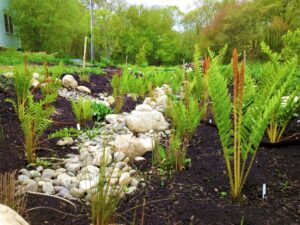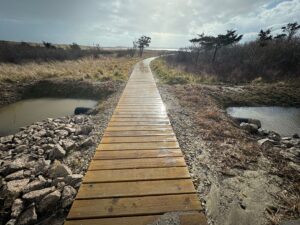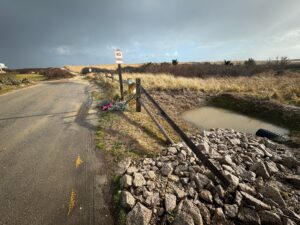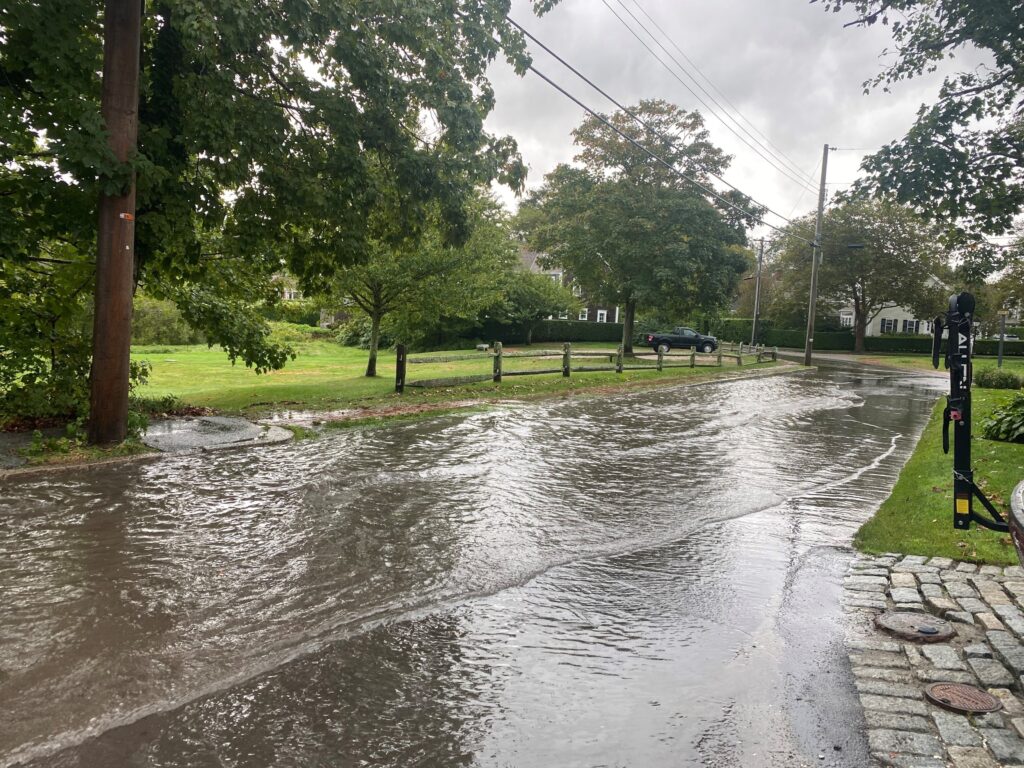 As an island community, Nantucket is becoming increasingly aware of the coastal impacts of climate change. We see these effects in a myriad of ways, whether it be erosion along the south shore or flooding on Easy Street. However, it’s important to remember that these impacts are being experienced throughout all parts of the natural world, including inland areas.
As an island community, Nantucket is becoming increasingly aware of the coastal impacts of climate change. We see these effects in a myriad of ways, whether it be erosion along the south shore or flooding on Easy Street. However, it’s important to remember that these impacts are being experienced throughout all parts of the natural world, including inland areas.
Some of the inland impacts of climate change we see today include storms and precipitation events which are becoming more frequent and intense. Accordingly, as time goes on, we must prepare ourselves to manage increased stormwater flooding in addition to coastal flooding.
When we receive significant rainfall, that rainwater flows into its respective watershed on Nantucket. With so much of our island being covered in hard, paved, impervious surfaces, this influx of water doesn’t have anywhere to go. It races along these surfaces, picking up pollutants and nutrients as it moves, forming the huge and inconvenient puddles we are all familiar with. Eventually this water makes its way to a catch basin, which is often a body of water or a wetland.
Managing stormwater typically means directing the water to a nearby catch basin so that it does not cause inconvenient flooding. Many of these catch basins are wetlands which provide valuable benefits including wildlife habitat, erosion protection, and improved water quality. Wetlands can hold high volumes of floodwater caused by storms and are able to filter out pollutants. The Land Bank hopes to harness the natural power of wetlands to help us manage stormwater on our properties. Read on for just a few examples of how we are doing this work!

Lily Pond
Lily Pond currently serves as the catch basin for a large watershed just west of downtown. From Lily Pond, water is directed into Nantucket Harbor via stormwater pipes. As it exists today, Lily Pond has limited floodwater storage and filtration capacity, with much of the lawn pooling with water after a storm, and it is full of invasive plants. Our upcoming restoration project at Lily Pond will expand the storage capacity of this wetland, enhance its filtration ability (thereby improving the quality of stormwater entering the harbor), and improve native habitats which exist in the pond and surrounding park.

Land Bank Rain Garden
The Land Bank’s property at 65 & 67 Easton St is currently a lawn where stormwater tends to pool after rainstorms. Like Lily Pond, the stormwater in this area drains into Nantucket Harbor through stormwater pipes. To address these localized flooding issues in an environmentally beneficial way, the Land Bank will be installing a rain garden at this property. A rain garden is a landscaped depression that collects rainfall and allows water to percolate into the soil slowly; it is intentionally designed with water-tolerant vegetation that can hold, filter, and absorb stormwater. This garden will help to redirect some of the stormwater away from Easton Street while also improving the water quality of stormwater exiting the park and entering the harbor.

Swales at Sesachacha
The Land Bank employed a similar form of stormwater management at Sesachacha Pond, when we installed bioswales on either side of our new boardwalk leading to the pond. Historically, there has been significant flooding/pooling of stormwater along Sesachacha Road by this entrance. Along with the installation of a boardwalk, we took the opportunity to direct this stormwater into swales, which are strategically designed and vegetated areas that can hold and absorb stormwater, keeping it off roads or other undesirable areas. In the photos below, you can see how these swales functioned after a recent rainstorm, successfully directing water away from the road and boardwalk.


Nature-based solutions are often referred to as green infrastructure. These are all examples of how the Land Bank is working collaboratively with the Town to address stormwater management needs with green infrastructure while fulfilling the recreational and environmental components of our mission.

